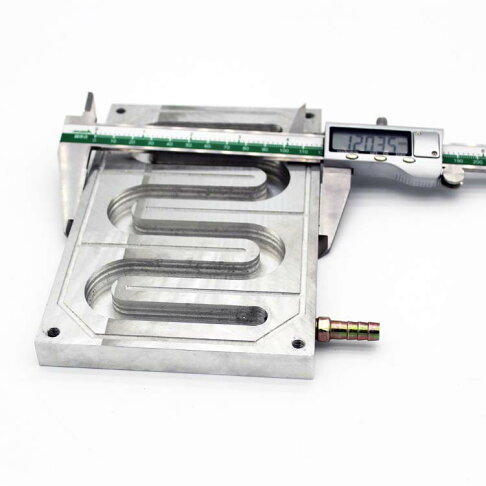Tel: +86-18025912990 | Email: wst01@winsharethermal.com
Blog


Views: 46 Author: Site Editor Publish Time: 2023-09-25 Origin: Site
In the realm of power electronics, encompassing control, conversion, drive systems, signal transmission, and emerging sectors like new energy (including cooling for new energy vehicle power batteries, UPS, energy storage systems, large servers, photovoltaic inverters, and SVG/SVC applications), the pursuit of high efficiency, low noise, and consistent low-temperature operation is paramount. However, the confines of limited space often make heat dissipation a significant challenge in achieving ideal product development. In such scenarios, liquid cooling technology, mainly water-cooling plates, emerges as the preferred solution for efficient thermal management.


A comprehensive water-cooled plate system comprises several key components, each vital in the cooling process. These components include:
1.Water-Cooled Block: The heart of the system, this metal block, usually made of copper or aluminum, features intricate internal water channels. It comes into direct contact with the component, such as a CPU, and absorbs the heat generated.
2.Circulating Fluid: The circulating fluid's primary function is to drink and efficiently carry away the component's heat. Its high heat absorption capacity ensures that temperature fluctuations remain minimal.
3.Water Pump: The pump aims to propel the circulating fluid through the system. As the liquid absorbs heat from the CPU at the water-cooled block, it is pumped out, allowing fresh, lower-temperature juice to continue the cooling process.
4.Water Pipeline: Connecting the water pump, water-cooled block, and sometimes a water tank or heat exchanger, the water pipeline forms a closed-loop channel for the circulating fluid. It must maintain a sealed circulation path, preventing any leaks.


Water-cooled plates come in various structural forms, each catering to specific cooling needs:
1.Brazing Process: Ideal for scenarios with high heat flux density, this process involves welding components together in a gas-protected environment. Copper or 1-series and 3-series aluminum materials are commonly used in this process.
2.Buried Pipe Process: Suited for single-sided device installations, this method entails flattening copper tubes and milling them simultaneously with aluminum plates. This maximizes the thermal conductivity of the copper tubes while keeping the overall structure lightweight.
3.Welded Pipe Process: This process is suitable when using copper plates and tubes. It reduces plate thickness, leading to weight reduction.
4.Double-Sided Clamping Process: This straightforward, cost-effective process involves device installation on both sides of the plate. It often employs aluminum plates and aluminum, copper, or stainless steel tubes.
5.Friction Welding Process: Utilizing advanced aerospace industry technology, friction welding (FSW) forms flow channels directly on copper or aluminum plates. It excels in applications with high-reliability requirements, elevated heat flux densities, and complex flow channel designs. Grooves are created on the substrate and sealed through brazing, diffusion, or friction welding.


Water-cooled plates in the thermal management industry primarily adopt four water channel formation methods:
1.Buried Pipe Type: This method involves CNC milling grooves into aluminum alloy plates, embedding copper pipes into these grooves, and filling any gaps with thermally conductive adhesive.
2.Vacuum Brazing Type: CNC machining creates aluminum plates' required water channel shape. A cover plate is placed over the water channel, brazing material is applied between the cover plate and aluminum plate, and the assembly is baked in a vacuum brazing furnace.
3.Electron Beam Welding Water Channel Type: CNC processing transforms the aluminum plate into a water channel. The cover plate is machined similarly, covering the water channel, and is then welded using electron beam welding.
4.Friction Stir Welding Water Channel Type: CNC processing shapes the water channel on the aluminum plate, and a corresponding cover plate is manufactured. These components are assembled, and friction stir welding is employed to join them, ensuring a robust seal.


The water-cooling plate is a device used for heat dissipation. Its principle is to use the high thermal conductivity of water to conduct heat from the heat dissipation source to the water-cooling plate, and then dissipate the heat through the heat dissipation surface of the water-cooling plate. Water-cooled panels have the advantages of high efficiency, silence, and reliability, and are widely used in electronic equipment, industrial equipment, and other fields.
In water-cooled radiators, Winshare Thermal stands as a leading authority, offering professional customization capabilities and tailoring cooling solutions for diverse applications. If you have any inquiries about cold plates or require a customized cooling solution, please feel free to reach out via comments or email to contact Winshare.